Wednesday 29.04.2015
LEARNING AND CAPACITY BUILDING
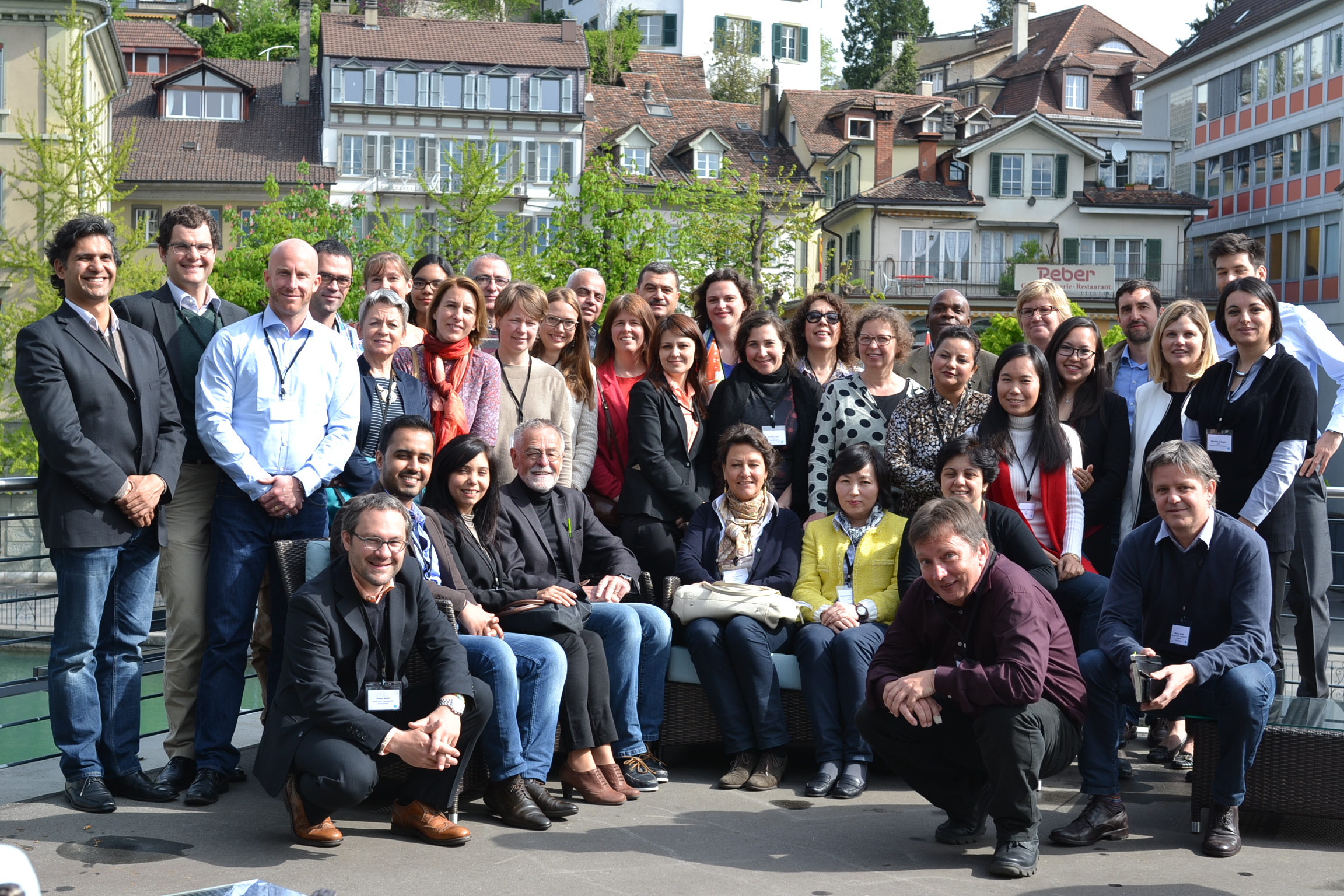
Photo Gallery »
VSD PORTFOLIO AND TRENDS
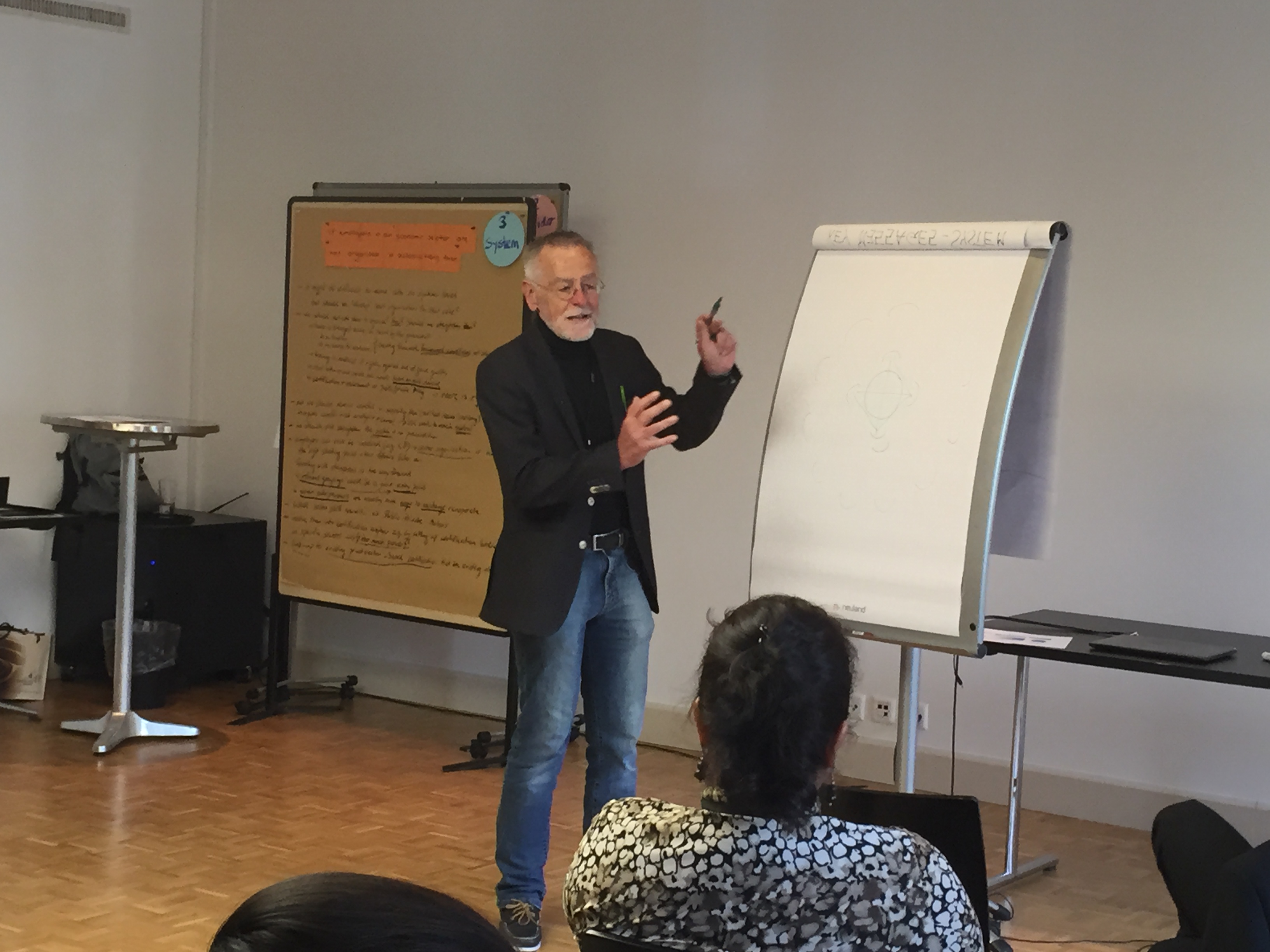 As an opening,
Gunter Kohlheyer (part of the SDC’s VSD backstopping team) reminds participants of the SKAT/SDC booklet “When there is no job” written in 1997 by J.P. Grierson. This booklet describes the still persisting key problems of VSD: a mutually reinforcing circle of no equity (exclusion of majority), irrelevance (lack of job competence), and costliness (underfunded). Our discussion shows that the general reputation of vocational education is also a problem in almost all countries, and that VSD in rural regions (particularly in African countries) still is a challenge of its own.
As an opening,
Gunter Kohlheyer (part of the SDC’s VSD backstopping team) reminds participants of the SKAT/SDC booklet “When there is no job” written in 1997 by J.P. Grierson. This booklet describes the still persisting key problems of VSD: a mutually reinforcing circle of no equity (exclusion of majority), irrelevance (lack of job competence), and costliness (underfunded). Our discussion shows that the general reputation of vocational education is also a problem in almost all countries, and that VSD in rural regions (particularly in African countries) still is a challenge of its own.
Andrea Inglin (SDC) presents SDC’s VSD portfolio. Currently there are 50 SDC-financed VSD projects in 32 countries and some additional projects with VSD components in other domains. VSD is a priority theme in 13 countries with SDC investing about 40 million CHF annually. The majority of projects focus on poor, disadvantaged and vulnerable groups, except for projects in Southeast Europe and CIS. This focus often includes youth and women. Almost all VSD projects mention cooperation with the private sector in their fact sheets, two thirds of projects also aim at improving systemic framework conditions.
Franz Kehl (KEK) adds that we do not know enough about results and about financing and that we should reinforce our efforts for results measurement (see
Common Outcome Indicators for VSD).
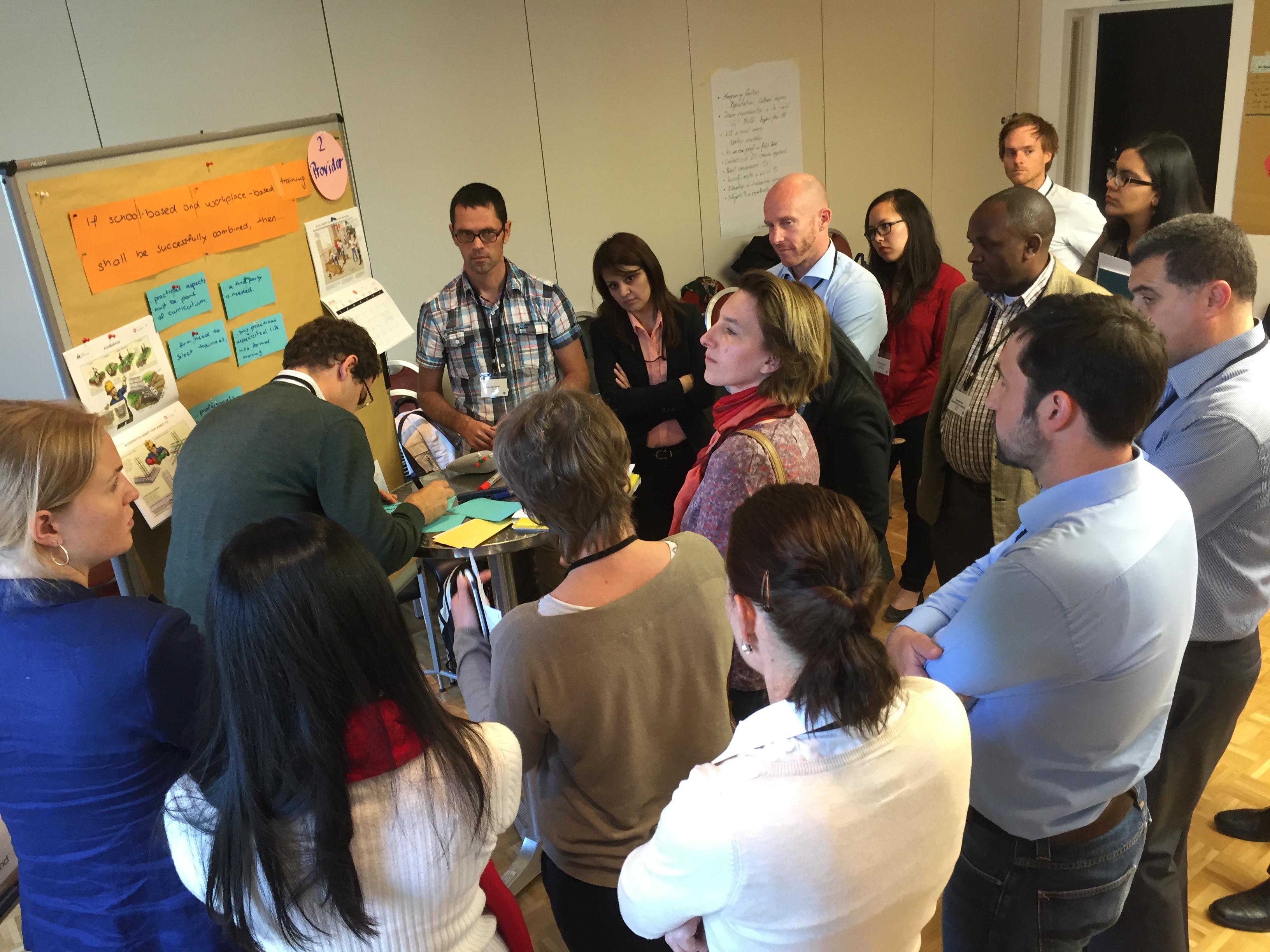 Simon Junker then quickly gives some orientation on the draft for the 2017-2020 SDC dispatch (Botschaft) to the parliament where VSD is prominently mentioned mainly in the chapter on Education, but also with topics such as Economic Development or Gender. The discussion will be ongoing if SDC’s labour market integration projects should also in the future be labeled VSD / VET. Simon then presents the new Donor Committee for dual VET (DC dVET) with Germany, Austria and Lichtenstein.
Simon Junker then quickly gives some orientation on the draft for the 2017-2020 SDC dispatch (Botschaft) to the parliament where VSD is prominently mentioned mainly in the chapter on Education, but also with topics such as Economic Development or Gender. The discussion will be ongoing if SDC’s labour market integration projects should also in the future be labeled VSD / VET. Simon then presents the new Donor Committee for dual VET (DC dVET) with Germany, Austria and Lichtenstein.
Sibylle Schmutz (Swisscontact) is introduced as head of the DC dVET’s secretariat. DC dVET will foster common understanding of dual VET in development cooperation and provide a platform for practitioners. Its aim is to contribute to more and better VET interventions and therefore to individual, social and economic development and poverty reduction. A public event in Switzerland is foreseen for early 2016.
THE PRIVATE SECTOR’S ROLE IN VSD
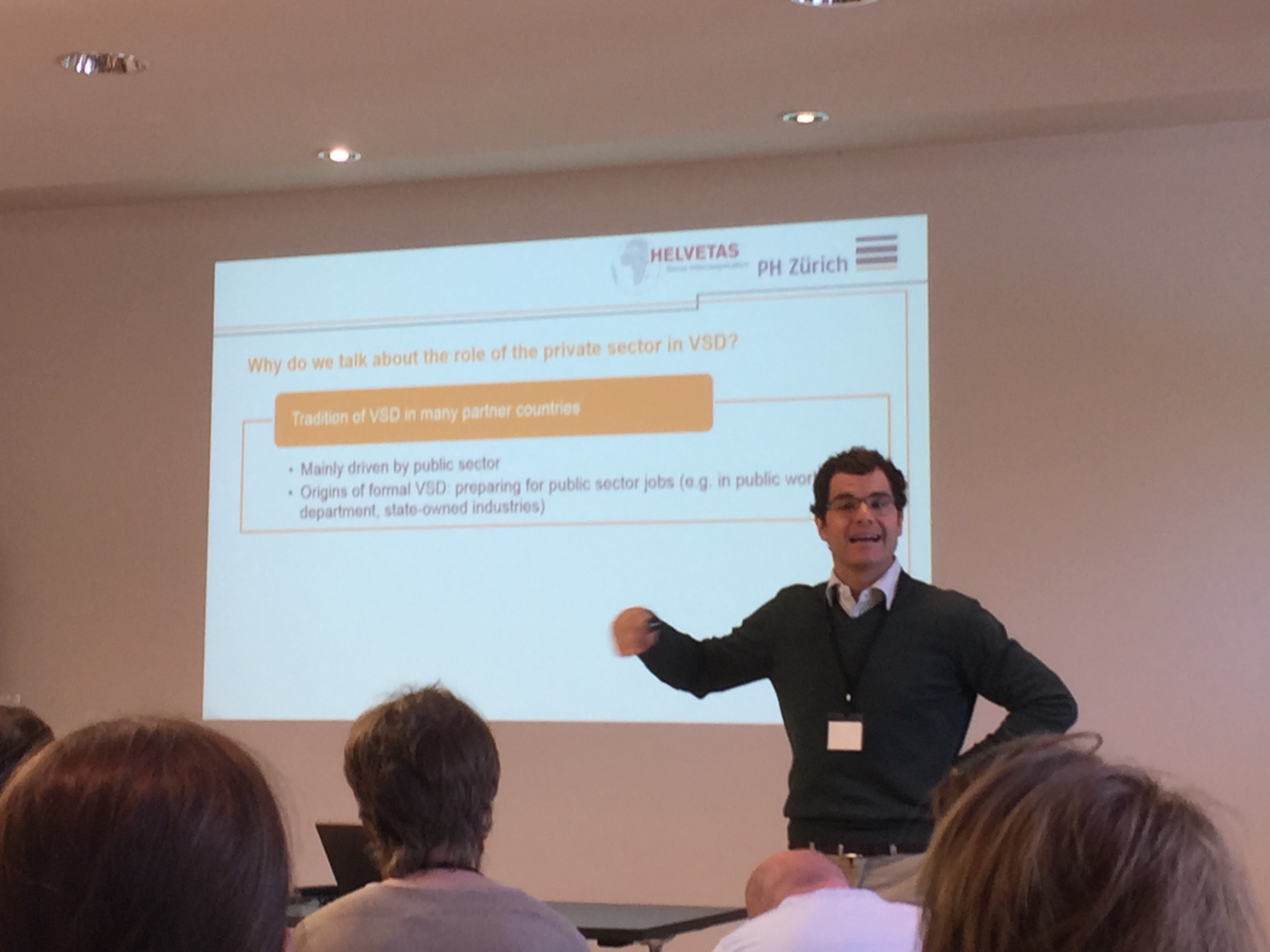 Markus Maurer (PH Zürich) and
Katharina Walker (Helvetas Swiss Intercooperation) elaborate on the role of the private sector in vocational skills development and the recent e+i e-discussions on this topic. While VSD in most of our partner countries was initially public sector driven, collaboration with firms and entrepreneurs (also including the informal economy) becomes more and more important. Markus remains us that in Switzerland however there are also public authorities that serve as provider of training and clients of training at the same time.
Markus Maurer (PH Zürich) and
Katharina Walker (Helvetas Swiss Intercooperation) elaborate on the role of the private sector in vocational skills development and the recent e+i e-discussions on this topic. While VSD in most of our partner countries was initially public sector driven, collaboration with firms and entrepreneurs (also including the informal economy) becomes more and more important. Markus remains us that in Switzerland however there are also public authorities that serve as provider of training and clients of training at the same time.
Some key issues mentioned in this session include:
-
Competencies and relevance: Labour-market orientation of training is a must. However employers often expect a super high match between skills profiles of trainees and the occupational profiles, so that no on-the-job training is needed. This is virtually impossible. Practical hands-on training is crucial for most jobs and this seemed too costly for most donors (e.g. World Bank) who then focussed on basic education.
-
Communication: Development cooperation and private companies often do not speak the same language. It’s important that we try to understand each other, and that we get exposed to an entrepreneur’s reality. Therefore we all should visit the enterprise… The goal of cooperation should be to create real private sector ownership for VSD.
-
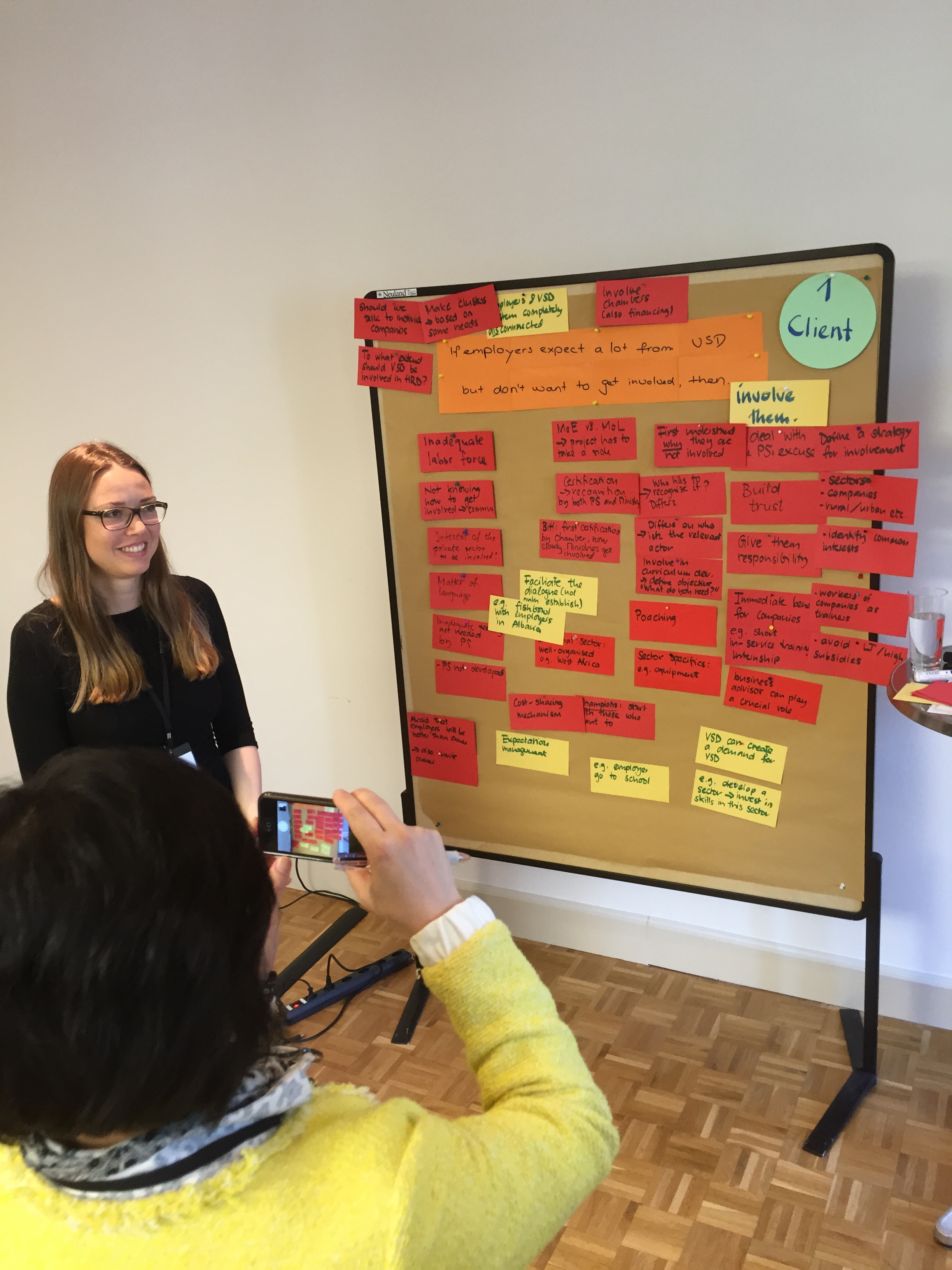 Initial and continuous VSD differ: I-VSD is generally seen as a quasi-public task. A training market primarily exists for enhancing the productivity of workers already with a particular company (C-VSD).
Initial and continuous VSD differ: I-VSD is generally seen as a quasi-public task. A training market primarily exists for enhancing the productivity of workers already with a particular company (C-VSD). -
Decent work: Decent work aspects are essential, however communication matters a lot and improving working conditions should go hand in hand with improving productivity.
-
Informality: Finding a legitimate representation of the world of work is challenging. We should not neglect informal apprenticeship schemes that exist in many countries and where the (informal) private sector is the main (or the only) stakeholder.
Three roles of the private sector are then further elaborated in workshops:
Watch excerpts from this presentation:
FISHBOWLS ON SELECTED VSD ISSUES
- Poverty and Productivity
- VSD and Migration
- VSD in Market Systems Development
Write-ups will be provided soon by the fishbowl moderators (see
PDF with flipchart write-ups).
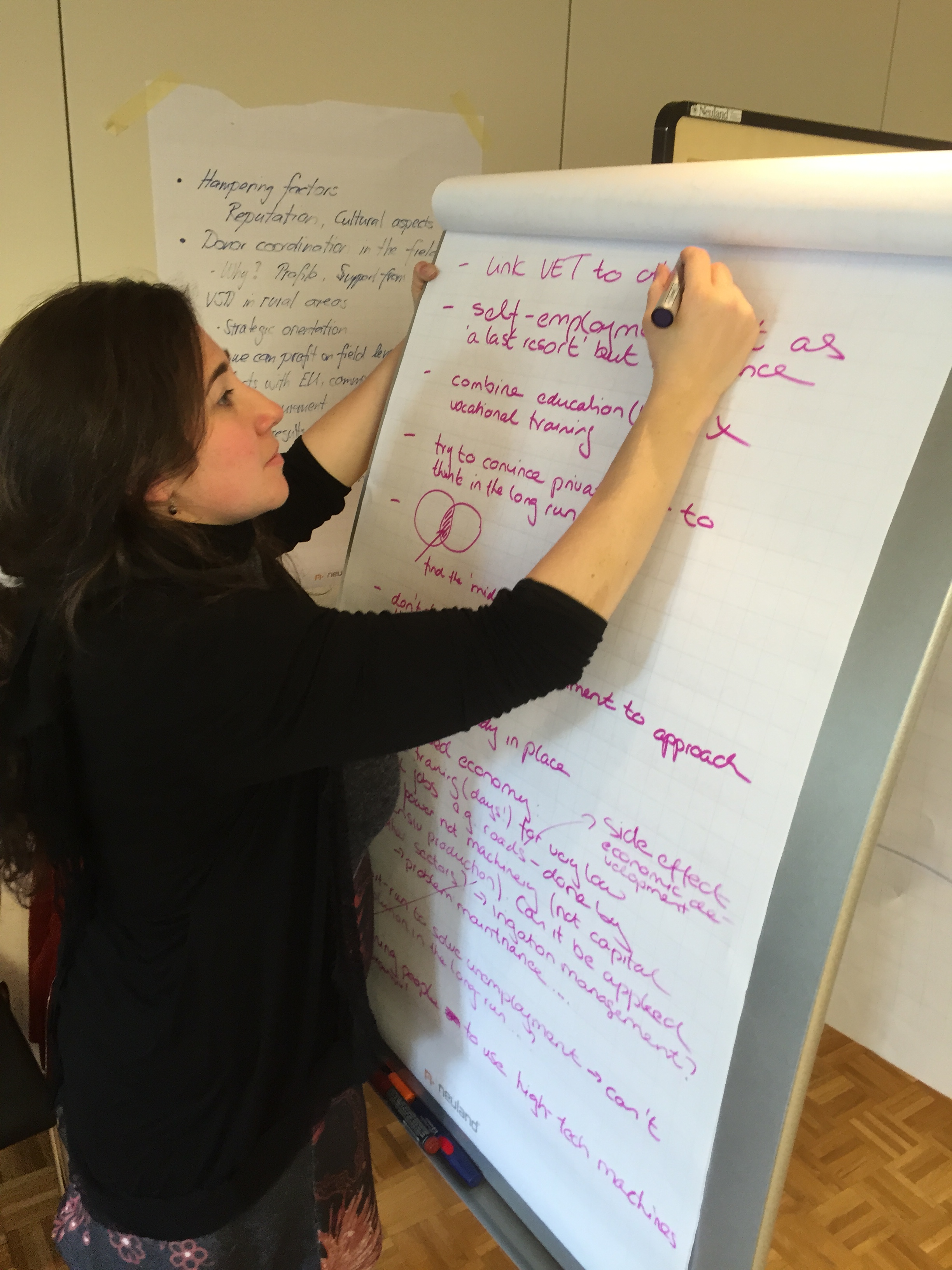 Resources:
Resources:
And what do participants take home?
Program
Download programme here (page 4)
|
8:00 |
Arrival, registration and coffee for participants who join for the day |
| 8:30 |
Welcome |
| 8:40 |
SDC’s VSD Projects:
Present Portfolio, future trends & Parliament Message; Inputs by Simon Junker & Andrea Inglin (SDC); Donor Committee for dual VET; Input by Sibylle Schmutz (DC dVET); Discussion, Q&A |
|
10:00 |
Break |
| 10:30 | The
Private Sector in VSD: Inputs by Markus Maurer (theory) and Katharina Walker (insights from SDC’s e-discussion) followed by workshops on different roles of the Private Sector as: “VSD center client”, “Provider of Learning at Work” and “Partner in VSD System Design and Management” (download presentation) |
|
12:30 |
Lunch |
| 13:30 | Continuation of workshops, report back and clarifications |
| 14:10 | Introduction to the “Fishbowl” discussions and opening statements |
|
15:10 |
Break |
| 15:20 |
Fishbowl Discussions (parallel) on “VSD between poverty alleviation and economic development”, “VSD and Migration” and “Market System Development approaches in VSD projects” |
| 16:30 |
Speech by Manuel Sager, Director General, SDC |
|
17:00 |
Closing |
| SDC and speakers only: departure for social event at Niesen, 17:45-23:00 |
